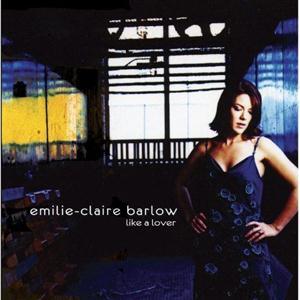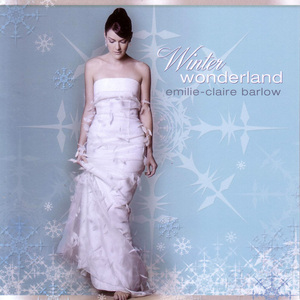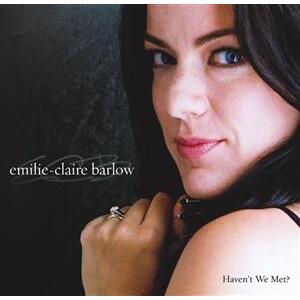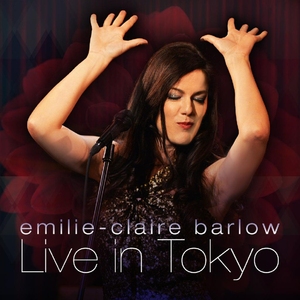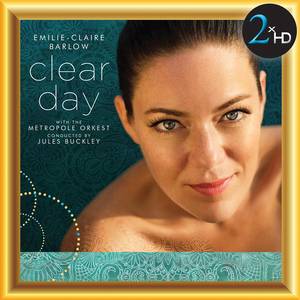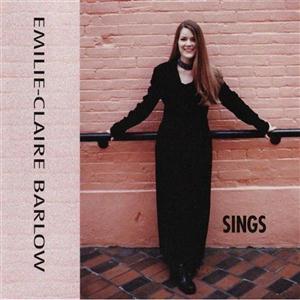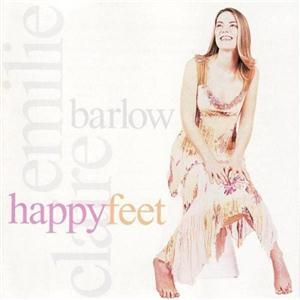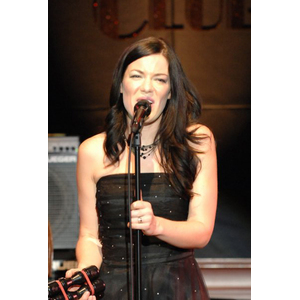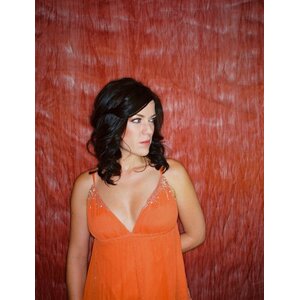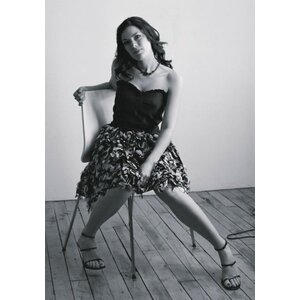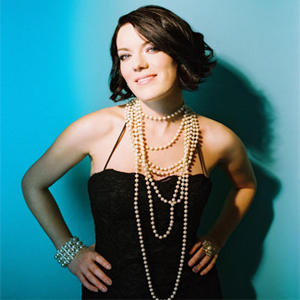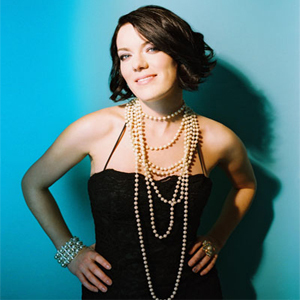Barlow, Emilie-Claire
Websites:
https://emilieclairebarlow.com/
Origin:
Toronto, Ontario, 🇨🇦
Biography:
Emilie-Claire Barlow is an award winning and critically acclaimed Canadian jazz singer, arranger, record producer and voice actress. A two time Juno Award winner and six time nominee, she has released 11 self-produced albums on her own label, Empress Music Group.
She is known for her inspired re-imaginings and affectionate treatment of both classic pop and jazz songs, delivered with a relaxed, polished demeanor, charming humour, and a voice of unforgettable beauty.
Her performing career spans over 20 years in venues ranging from Toronto’s storied Montreal Bistro, Tokyo’s Cotton Club and more recently concerts with symphony orchestras at Toronto’s Massey Hall and Montreal’s Maison Symphonique. She has performed at the Montreal Jazz Festival on seven occasions including a 2015 performance on the Main Stage with 50,000 people attending.
Ms. Barlow has led bands featuring the finest musicians in Canada. Her work as a band leader and producer has been recognized with a Juno Award nomination for “Producer of Year” for her recording “Clear Day” featuring the Metropole Orkest— notable for being only the 2nd Jazz recording nominated in this category. Ms. Barlow is also one of a very small group of women to be honoured with a “Producer of the Year” nomination.
Ms. Barlow’s all francophone recording “Seule ce soir” won a Juno and Felix Award in 2013 representing a remarkable achievement in Canadian bilingualism.
For Juno award winning singer Emilie Claire Barlow, there never was a Plan B. No day jobs or fallback plans in case music didn’t work out. “I’ve always been a singer,” she said. “I just knew that’s what I was, who I was and what I was always going to do.” It has been so much in her blood from the start that the Toronto born jazz vocalist and arranger remembers that she learned to read music around the same time she learned to read words. “It was part of our language,” Barlow said, remembering childhood trips to recording studios with her parents, drummer Brian Barlow and singer Judy Tate.
When she was 7, Barlow was recruited to deliver the kid’s line in a jingle her mother was recording for Tide. The child’s natural, untrained voice, reliably in tune, guaranteed work in radio and television ads from the beginning. That unaffected quality of Barlow’s vocals has deepened with sophistication over the years, along with her phrasing and astonishing pitch, but the vulnerability and warmth at the core of her approach are still intact. No over sung melismas are to be found in her body of work. Holly Cole was an early source of inspiration for Barlow. “She has a unique voice. And there was a chemistry with her musicians. She takes a song and completely reimagines it, reinvents it. That’s what I do,” Barlow said, mentioning Bobby McFerrin, Tony Bennett, Ella Fitzgerald, Kurt Elling, Sarah Vaughan, Joni Mitchell and the jazz vocal group The Singers Unlimited as other important artists who caught her ear. But the idea has always been to take risks, not to imitate.
The arrangements Barlow was beginning to write in college found their way into the making of her 1998 debut, EmilieClaire Barlow Sings. The recording was a confident disc of jazz standards and contemporary favourites that showcased her scatting abilities, as on Charlie Parker’s Billie’s Bounce. Her father coproduced, helped arrange and played on the album and its two successors. The brisk and breezy Tribute (2001) earned Barlow her first Juno nomination in the Jazz Vocal Recording category. Her vocalese turn on Twisted made the track a tour de force, while a kinetic Air Mail Special showed her at her most playful. A medley of Antonio Carlos Jobim numbers and Sting’s La belle dame sans regret were perfect illustrations of her fascination with Brazilian and French songs a devotion that continues to this day.
The critics were already cheering. “ Her devastating chops let her zip through the changes like a trumpeter, hitting all the high notes with the clarity and accuracy of Dizzy Gillespie in full, glorious flight,” a concert review in the Hamilton Spectator raved at the time, “… and she can swing like a raging storm.” The lyrics in Barlow’s kinetic take on Stompin’ At the Savoy gave Happy Feet (2003) its title. The album, which also included the percussive gem Zabumba No Mar, completed a trilogy that established Barlow as a jazz chanteuse with a serious future. A turning point came in 2005, with Like a Lover, a disc that saw Barlow break out on her own and take greater control over the process of choosing and recording material. The light, poppish bossa nova groove of the title track and a sensitive, insightful reading of the jazz standard Blame It On My Youth showcased an artist growing more selfassured with each release.
Barlow has said that it was with the seasonal album Winter Wonderland, released the following year, that she found her own voice. With such unusual arrangements as an energetic, sambastyled take on Sleigh Ride, she demonstrated how well a jazz approach can fit Yuletide chestnuts. It was the first time Barlow had written string arrangements, a skill she continued to develop on The Very Thought of You (2007). Her scoring abilities on that album are exemplified by the haunting introduction of Les yeux ouverts, a French adaptation of Dream a Little Dream of Me. The lighthearted O Pato (The Duck), which was also included, remains a fan favourite and a concert highlight, while a sassy, bluesy Surrey With the Fringe On Top illustrated her capacity to surprise with left field arrangements and interpretations. The disc, which Barlow counts among her favourites in her catalogue, earned her a second Juno nomination.
Barlow found herself among the Juno contenders a third time with Haven’t We Met?, which was released in 2009, the year after she received a National Jazz Award as female vocalist of the year. Among the disc’s high points were a haunting You Must Believe In Spring, arranged for voice and strings, and the infectious title song. The Beat Goes On (2010), which topped the iTunes jazz chart, launched a series of albums that reflected Barlow’s need to move in unexpected directions. Flipping the pages of her popular music songbook ahead a few decades, she found a special angle on ‘60s favourites made famous by the likes of Bob Dylan, Stevie Wonder, Nancy Sinatra and Donovan. The title track, a Sonny and Cher hit, was mashed up with Quincy Jones’s Soul Bossa Nova in one of the album’s delightful flights of whimsy.
Her cover of Breaking Up Is Hard To Do even drew a delighted thank you note from the song’s composer, Neil Sedaka, who declared himself a fan. The Juno finally came Barlow’s way, along with Quebec’s ADISQ award, for her first all French album, Seule ce soir, released in 2012. For the project, she rerecorded some songs she had previously released in the langue†de†Molière†and added six new selections, including an inspired, minimalist reworking of the 1964 country hit Quand le soleil dit bonjour aux montagnes. She followed that triumph with the iTunes only release Live In Tokyo (2014), which offered a high spirited look back at her career to date. Barlow has kept her vocal cords supple by providing the voices for characters on such animated series as the Emmy winning Peg + Cat and the adult cartoon sitcom Fugget About It.
She has also done voice acting for Total Drama, 6teen and Almost Naked Animals. “It’s an incredible complement to being a singer,” she said. “I’m able to use my voice and my voice stays in shape, because I’m constantly stretching it. It’s a muscle that’s being worked out all the time and it’s also allowed me to explore different parts of my voice.” “I get asked all the time when I’m going to write my own songs,” Barlow said during a 2012 interview. “Maybe I will, but I might not. It’s a completely different craft. I marvel at that skill, but I have a lot of ideas for repertoire and for arrangements. That’s my creative process. That’s how I get my creative kicks, how I express myself: by writing arrangements for horns and strings. That, to me, is a hugely important part of the process that I don’t want to give up.” Nothing has illustrated that flair as much as Barlow’s latest musical journey, the daringly arranged and imaginatively chosen songs on her 2015 disc, Clear Day.
The album, which ushered in a new phase of her career, began with her experiences four years ago on an icebreaker. Accepting an invitation to board the CCGS Amundsen as an observer and sailing through the Northwest Passage to Resolute in Nunavut led Barlow to take stock of her life and make significant changes, which included leaving her marriage. As personal revelations were gradually reimagined into universal ones, the ambitious Clear Day began to take shape. Era and genre spanning songs that seemed to tell a chronological story of her emotional journey were selected as the project morphed into a concept album with a narrative an almost revolutionary move in an age where the streaming single track rules. Brad Mehldau, Paul Simon, David Bowie and Queen, Coldplay, Pat Metheny and Joni Mitchell are among the artists whose work was used as a foundation but certainly not copied. For six months, in fact, Barlow and collaborator Steve Webster, who is also her boyfriend, found themselves crafting fresh and unusual arrangements and orchestrations during virtually every spare moment. Lyrics were written for some pieces that had been strictly instrumental. A few of the album’s arrangements dated back to a concert with the Orchestre symphonique du Québec last October, an event that got Barlow and Webster thinking about writing for and recording with an orchestra.
John Metcalfe, whose work on Peter Gabriel’s Scratch My Back had impressed both of them, agreed to write orchestrations for two of the songs on the new disc, which also features the 70 piece Metropole Orkest on most of the tracks. Even the recording of the project broke with the traditional process. With the arrangements written in Mexico, the orchestra recorded in Amsterdam, Barlow’s band adding its parts in Toronto and some of the final vocals recorded before a small audience in Montreal, it was an international project. Clear Day, co-produced by Barlow and Webster, (released in October 2015). “With this album, I’m reaching for something bigger, more challenging and more personal,” Barlow said.
Her 12th album, Lumières d’hiver (Winter Lights), continues Emilie-Claire’s musical evolution with her first foray into song writing. Lumières d’hiver showcases three new original compositions — Le dernier Noël, Janvier and title track Lumières d’hiver.
Always pushing her boundaries, her original compositions honour Emilie-Claire’s love of sophisticated pop music. Emilie-Claire’s re-invention of cherished classics such as I’ll Be Home for Christmas, River, Noël Blanc breathe new life into these familiar chestnuts.
A surprise duet appearance by Mitsou Gelinas on Renée Martel’s As-Tu Vu Le Père Noël? is charming and jazzy and a re-imagined 90’s pop duet Hey Santa (en français) with chanteuse Ingrid St-Pierre is sophisticated and groovy. The album features Emilie-Claire’s usual cast of stellar musicians as well as Québec music scene luminaries Jean-François Beaudet (gtr) and Melissa Lavergne (percussion).
Lumières d’hiver is Emilie-Claire’s homage to the beautiful winters of Québec and the Québécois who celebrate them with warmth and charm.
– Bernard Perusse
AWARDS
2001 - Juno Award Nominee for Vocal Jazz Album of the Year (for Tribute)
2008 – Juno Award Nominee for Vocal Jazz Album of the Year (for The Very Thought of You)
2008 – Named National Jazz Awards’ ‘Female Vocalist of the Year’

